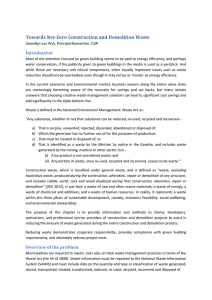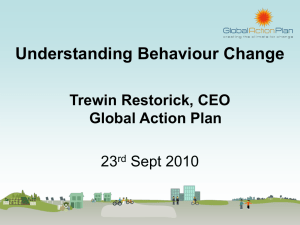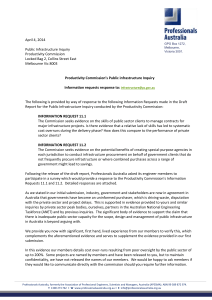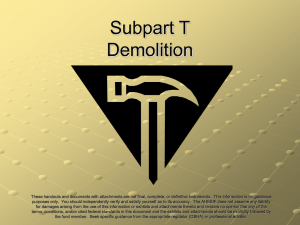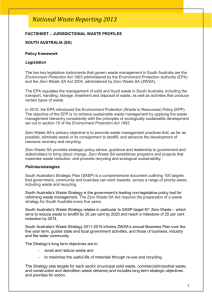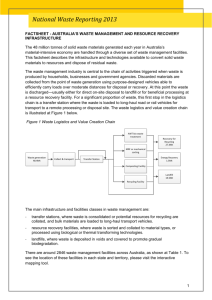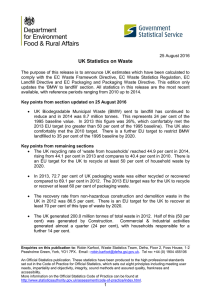Construction & Demolition (C&D) waste profile 2010-11
advertisement
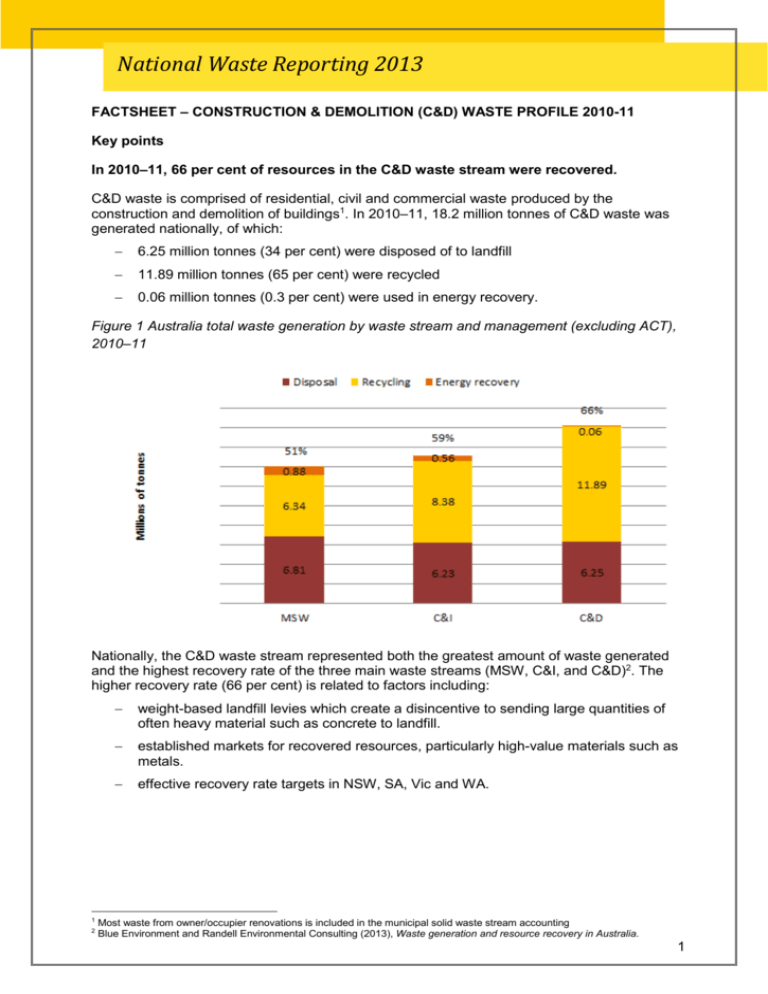
National Waste Reporting 2013 FACTSHEET – CONSTRUCTION & DEMOLITION (C&D) WASTE PROFILE 2010-11 Key points In 2010–11, 66 per cent of resources in the C&D waste stream were recovered. C&D waste is comprised of residential, civil and commercial waste produced by the construction and demolition of buildings1. In 2010–11, 18.2 million tonnes of C&D waste was generated nationally, of which: 6.25 million tonnes (34 per cent) were disposed of to landfill 11.89 million tonnes (65 per cent) were recycled 0.06 million tonnes (0.3 per cent) were used in energy recovery. Figure 1 Australia total waste generation by waste stream and management (excluding ACT), 2010–11 Nationally, the C&D waste stream represented both the greatest amount of waste generated and the highest recovery rate of the three main waste streams (MSW, C&I, and C&D)2. The higher recovery rate (66 per cent) is related to factors including: 1 2 weight-based landfill levies which create a disincentive to sending large quantities of often heavy material such as concrete to landfill. established markets for recovered resources, particularly high-value materials such as metals. effective recovery rate targets in NSW, SA, Vic and WA. Most waste from owner/occupier renovations is included in the municipal solid waste stream accounting Blue Environment and Randell Environmental Consulting (2013), Waste generation and resource recovery in Australia. 1 Figure 2 Australia total waste generation by waste stream, management, and jurisdiction (excluding ACT), 2010–11 Key ways to improve resource recovery in the C&D industry: 3 Reduce the contamination of wastes by capturing and segregating materials at, or close to, the source. The recovery rate of useful material is hampered by cross contamination with other materials such as asbestos, particularly in the mixed C&D waste stream. This mixed material currently represents the majority of C&D waste that is disposed to landfill, although as the cost of landfill disposal increases there is growing incentive for organisations to invest in mixed C&D waste processing. Further research and development into overcoming technical and market barriers. Significant volumes of material are still sent to landfill due to the inability to identify markets for the material as it is presented or due to the lack of technology and/or equipment to clean or segregate materials. Encourage the take up of recovered and recycled materials in construction by building awareness and knowledge of the specifications of the range of materials and products and their successful use. Design items e.g. products and buildings for their eventual deconstruction to enable greater resource recovery at end of life. Using recovered materials in new buildings also reduces the embodied energy impacts of buildings. The embodied energy in Australia’s existing building stock represents the equivalent of ten years of national energy and the embodied energy of a building is over 30 times the annual operating energy of office buildings3. Construction and demolition waste guide – recycling and re-use across the supply chain. 2 For more information on C&D waste see: Waste generation and resource recovery in Australia Waste generation and resource recovery in Australia workbooks Construction and demolition waste guide – recycling and re-use across the supply chain. Construction and demolition waste status report: management of construction and demolition waste in Australia 3

